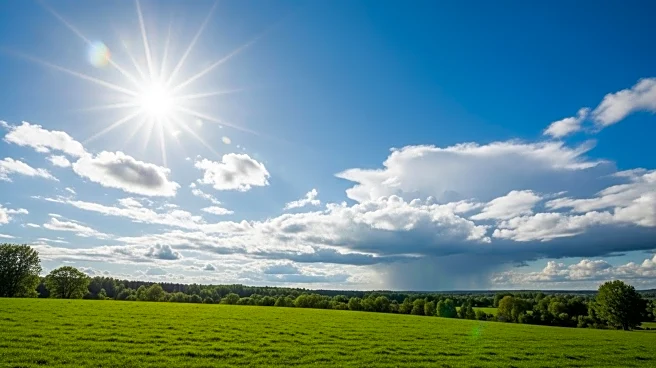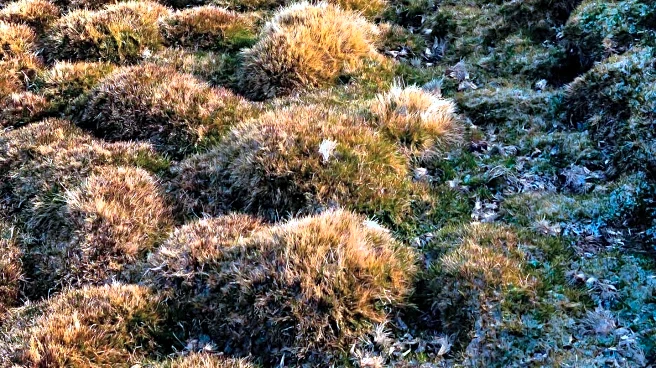What is the story about?
What's Happening?
Maryland is experiencing a warm and sunny weekend as high pressure moves offshore, bringing southerly winds and warmer temperatures. The weekend temperatures are expected to reach the upper 70s to near 80 degrees on Saturday and lower 80s on Sunday, with cool mornings in the upper 40s to 50s. As the week progresses, a strong cold front is anticipated to arrive by Tuesday evening, bringing showers and possible thunderstorms across the region. This weather system is expected to bring widespread rain and cooler temperatures, with the possibility of rain lingering into Wednesday afternoon.
Why It's Important?
The shift in weather patterns from warm and sunny to rainy and cooler conditions could impact various activities and plans across Maryland. Residents and businesses may need to prepare for potential disruptions due to the rain and thunderstorms. The cooler temperatures following the cold front could signal the onset of more typical fall weather, affecting outdoor events and agricultural activities. Understanding these weather changes is crucial for planning and safety, especially for those involved in outdoor work or events.
What's Next?
As the cold front moves through Maryland, residents can expect a return to more seasonal temperatures in the 60s and low 70s by Wednesday and Thursday. Canadian high pressure is predicted to build in, leading to a crisp and dry finish to the week. This change may prompt adjustments in daily routines and preparations for cooler weather conditions. Stakeholders such as event organizers and farmers will need to monitor weather updates closely to mitigate any adverse effects.
Beyond the Headlines
The transition from summer-like weather to cooler fall conditions may have broader implications for energy consumption and heating needs in Maryland. As temperatures drop, there could be an increase in demand for heating, impacting energy providers and consumers. Additionally, the rain and thunderstorms could affect local ecosystems, influencing water levels and soil conditions.
AI Generated Content
Do you find this article useful?















